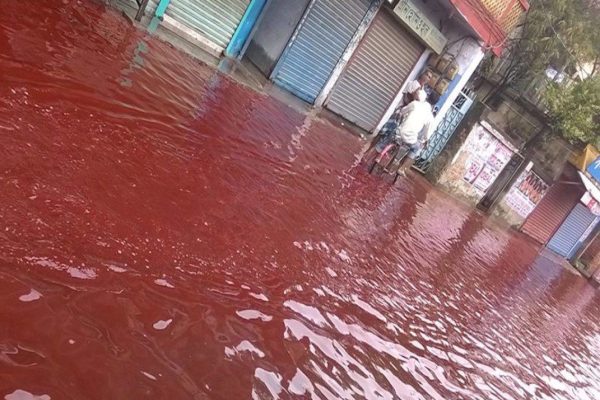Red rain in India was a phenomenon observed sporadically from 25 July to 23 September 2001 in the southern state of Kerala.
Heavy downpours occurred in which the rain was primarily red, staining clothes and appearing like blood.
The colouration of the rain was due to red particles in suspension in the rain water, and when it fell, the red rain was at times as strongly coloured as blood. It typically fell over small areas, no more than a few square kilometres in size, and was sometimes so localised that normal rain could be falling just a few metres away from red rain.
Red rainfalls typically lasted less than 20 minutes.
So was this an act of God or an act of man?
A number of theories have been put forward as to how this phenomenon occured, but the most plausible is that the red raindust was the result of incomplete incineration of chemical waste at the Eloor industrial zone, the particles being formed from microparticles of fly-ash or clay which coalesced around an aerosol of partly burnt organics as the incinerator plume cooled. The chemical composition of the raindust matches that of burnt organics plus clay; the fallout pattern matches with the prevailing winds; and various organic chemicals will form cellular structures which replicate in the prescence of clay. (First reported July 2001)


